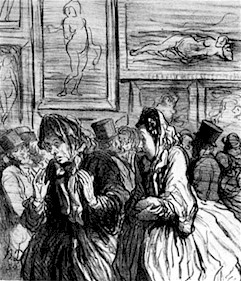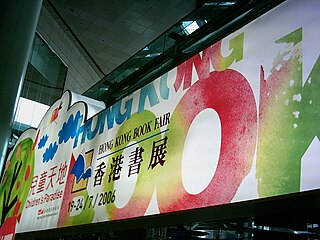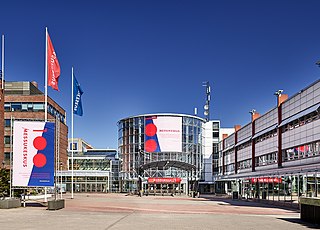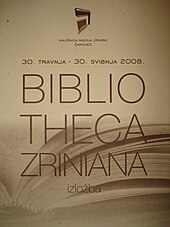
A world's fair, also known as a universal exhibition or an expo, is a large global exhibition designed to showcase the achievements of nations. These exhibitions vary in character and are held in different parts of the world at a specific site for a period of time, typically between three and six months.

The Great Exhibition of the Works of Industry of All Nations, also known as the Great Exhibition or the Crystal Palace Exhibition, was an international exhibition that took place in Hyde Park, London, from 1 May to 15 October 1851. It was the first in a series of World's Fairs, exhibitions of culture and industry that became popular in the 19th century. The event was organised by Henry Cole and Prince Albert, husband of Victoria, Queen of the United Kingdom.

The International Exhibition of 1862, officially the London International Exhibition of Industry and Art, also known as the Great London Exposition, was a world's fair held from 1 May to 1 November 1862 in South Kensington, London, England. The site now houses museums including the Natural History Museum and the Science Museum.

The 1873 Vienna World's Fair was the large world exposition that was held from 1 May to 31 October 1873 in the Austria-Hungarian capital Vienna. Its motto was "Culture and Education".

An art exhibition is traditionally the space in which art objects meet an audience. The exhibit is universally understood to be for some temporary period unless, as is occasionally true, it is stated to be a "permanent exhibition". In American English, they may be called "exhibit", "exposition" or "show". In UK English, they are always called "exhibitions" or "shows", and an individual item in the show is an "exhibit".

The Frankfurt Book Fair is the world's largest trade fair for books, based on the number of publishing companies represented. It is considered to be the most important book fair in the world for international deals and trading. The five-day annual event in mid-October is held at the Frankfurt Trade Fair grounds in Frankfurt am Main, Germany. The first three days are restricted exclusively to professional visitors; the general public attend the fair on the weekend.

The Hong Kong Book Fair is a book fair organised by the Hong Kong Trade Development Council, held annually at the Hong Kong Convention and Exhibition Centre, selling and exhibiting books, printed matter, stationery, printing, compact discs and other multimedia publishing.

Messukeskus Helsinki, Expo and Convention Centre is the biggest and best-known convention center in Finland. It is located in the capital city of Helsinki, in the district of Pasila, a short walk northwards from the Pasila railway station.
Nakaji Yasui was one of the most prominent photographers in the first half of the 20th century in Japan.
Yutaka Takanashi is a Japanese photographer who has photographed fashion, urban design, and city life, and is best known for his depiction of Tokyo.
The Kiyosato Museum of Photographic Arts is a gallery of photography in the Kiyosato region of the city of Hokuto, Yamanashi (Japan).
A virtual tradeshow is a virtual event run in an online environment hosted online for a limited period. It can be considered the online equivalent of a traditional tradeshow or exhibition, but exhibitors and visitors connect on the web rather than in person.
The Tampei Photography Club (丹平写真倶楽部) was a group based in Osaka from 1930 until 1941 that promoted avant-garde and, toward the end, socially concerned photography.

Fira de Barcelona is Barcelona’s trade fair institution. Every year, it organises numerous trade shows and congresses.

An exhibition, in the most general sense, is an organized presentation and display of a selection of items. In practice, exhibitions usually occur within a cultural or educational setting such as a museum, art gallery, park, library, exhibition hall, or World's fairs. Exhibitions can include many things such as art in both major museums and smaller galleries, interpretive exhibitions, natural history museums and history museums, and also varieties such as more commercially focused exhibitions and trade fairs. They can also foster community engagement, dialogue, and education, providing visitors with opportunities to explore diverse perspectives, historical contexts, and contemporary issues. Additionally, exhibitions frequently contribute to the promotion of artists, innovators, and industries, acting as a conduit for the exchange of ideas and the celebration of human creativity and achievement.

Fiera Milano SpA is a trade fair and exhibition organiser headquartered in Milan. The firm is the most important trade fair organiser in Italy and the world's fourth largest.

The following outline is provided as an overview of and topical guide to books:
Heimtextil in Frankfurt am Main, Germany is an international trade fair for home and contract textiles with more than 2,700 exhibitors and roughly 67,000 trade visitors. Throughout the four days of the event in mid-January, the trade fair serves as a business and information platform for manufacturers, retailers and designers from around the world. The next edition takes place from 10 to 13 January 2023. International exhibitors present their products to a wide trade audience on the Messe Frankfurt exhibition grounds. As the first marketing and ordering event of the year, Heimtextil showcases new home and contract textiles. By presenting bed, bath and table linens as well as floor and window coverings, upholstery and sun protection systems, Heimtextil covers the entire home and household textiles portfolio from across the globe.

The South African International Exhibition held in Cape Town, Cape Colony was a world's fair held in 1877 which opened on 15 February by Henry Bartle Frere.

The Victorian Intercolonial Exhibition world's fair was held in Melbourne, Colony of Victoria between 2 September and 16 November 1875.















